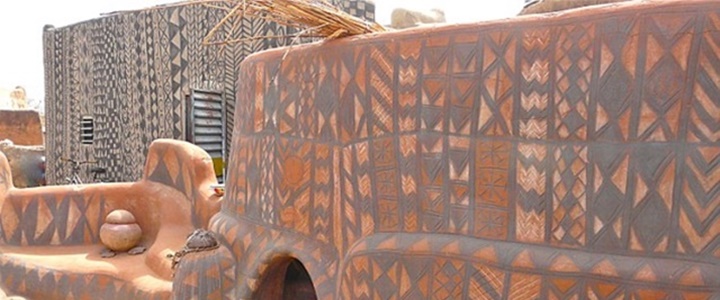My PhD thesis is a qualitative study exploring what Yoruba communities reflect as a deep and personal relationship with and within the region, which contributes significantly to their sense of emotional security and self-identity.
 This includes a strong conservation-oriented attitude with regard to the natural rural character of a clan, tribe or unbounded regions using linguistic families, especially in the inner core. It acknowledges the journey through time of the dwellers, changes in requirements in a natural way.
This includes a strong conservation-oriented attitude with regard to the natural rural character of a clan, tribe or unbounded regions using linguistic families, especially in the inner core. It acknowledges the journey through time of the dwellers, changes in requirements in a natural way.
The objective of this research is to identify the regional, cultural and environmental demands of where and how a fractal spatial function can be observed as well as how the Yoruba community can be organised to maintain and preserve its culture in a natural way – thus, responding to specific characteristics of the local environment and climatic conditions.
This lifelong interaction between the cognitive and physical realms has existed over time. During the evolution of the values, inhabitants adapted form and materials to the conditions of nature: working with natural forms and climatic cycles rather than considering forces as obstacles to overcome has hermeneutic and practical values; used by intentional makers.
The cultural identity in the Yoruba home, and then the process of home making ‘made’ the inhabitants; a reciprocal reward. This will include their connection to the culture, region and environment while proposing a self-organisational solution. The future of conserving African tangible and intangible values, the need to take lessons from the past into the future through present resolutions while documenting what maybe an interrupted progression.
What Does Fractal Mean?
-
A Fractal is a rough or fragmented geometric shape that can be split into parts, each of which is (at least approximately) a reduced-size copy of the whole – a property called self-similarity. It often has the following features:
-
It has a fine structure at arbitrarily small scales.
-
It is too irregular to be easily described in traditional Euclidean geometric language.
-
It is self-similar (at least approximately or stochastically).
-
It has a Hausdorff dimension which is greater than its topological dimension (although this requirement is not met by space-filling curves such as the Hilbert curve).
-
It has a simple and recursive definition.
Traditional African settlements tend to use fractal structures, circles of circles of circular dwellings, rectangular walls enclosing ever-smaller rectangles, and streets in which broad avenues branch down to tiny footpaths with striking geometric repetition. These indigenous fractals are not limited to architecture; their recursive patterns echo throughout many disparate African designs and knowledge systems.
 Thinking of sustainability, an infinitely recyclable product can be compared to a repeating unit like in the Sierpinski gasket. An inference from cradle to cradle concept. This can also be thought of as a regenerative process. The stability of a system depends upon the relative number and the sizes of the components.
Thinking of sustainability, an infinitely recyclable product can be compared to a repeating unit like in the Sierpinski gasket. An inference from cradle to cradle concept. This can also be thought of as a regenerative process. The stability of a system depends upon the relative number and the sizes of the components.
It also depends upon the interconnectivity on the same level and at different levels. The complexity and diversity are essential and add on the overall quality of space. A phenomenon I discuss later as layering. It is quite visible in the number of layers in any settlement that create the multitude of events that occur.
Fractal spatial patterns in Space and Landscape embraces complexity and diversity. An environment design with an altered concept of scale embracing the idea of complexity, diversity, harmony and natural flow.
So my research explores how African architecture shapes my experiences of place and both captures and conjures memory. I explore how African architecture exists beyond a material object and how it registers as a place that I have come to remember beyond the physical location.
Connecting African architecture with geography, visual culture and fractal spatial patterns, I look at the infinite variations of how African architecture has mapped my physical, mental and emotional space.
Thesis Title
Merging The Self-Organizational Activity Approach Using African Fractal Spatial Patterns with Tangible and Intangible Values (Yoruba Cities as a case study)
Discipline
Environmental & Conservative Architectural Technology
Fractals, Race, Class and Cornrows





